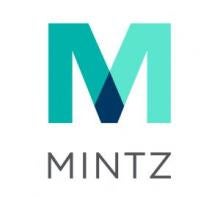Over the past few weeks, we have been closely following the Trump administration’s restructuring of the Department of Health and Human Services (HHS), the major reduction in the department’s workforce (RIF), and its broader deregulation strategy. A recently leaked Office of Management and Budget (OMB) Budget “passback” memorandum to HHS, which outlines proposed amounts for the President’s HHS budget request for fiscal year (FY) 2026 (the “Leaked Budget”) as well as departmental restructuring plans, provides additional insights into the administration’s priorities for HHS and the agencies under its purview. In addition, on May 2, 2025, the administration submitted to the Senate Committee on Appropriations the President’s “skinny” FY 2026 budget request (the “Skinny Budget”), which will be followed in the coming weeks by a more complete FY 2026 federal budget request.
This blog post will provide an overview of the major provisions of the Leaked and Skinny Budgets (including key differences between the two), what they may say about the administration’s policy priorities, and their potential impact on key stakeholders, including insurance plans, health care providers, hospitals, and medical product manufacturers. We focus more on the Leaked Budget in this blog post, as the Leaked Budget includes additional detail compared to the Skinny Budget.
What Is the Leaked Budget?
The Leaked Budget represents OMB’s budget numbers that were submitted to HHS to allow the department to provide feedback and to potentially appeal or negotiate some of the figures before preparing a final budget proposal for inclusion in the President’s final budget request that will be submitted to Congress. Similarly, once those processes are completed, the President’s budget request will not reflect the final federal budget for FY 2026, as it still must undergo congressional approval and enactment. Accordingly, the Leaked Budget represents a relatively early node in this multi-step, intricate process. It is also likely to be an incomplete picture of what President Trump and his OMB may end up asking for from Congress, as it is focused on discretionary spending and doesn’t include potential legislative proposals for HHS that the White House may also want to submit for congressional consideration.
Historically, presidential budget requests have been messaging documents that often are largely ignored by the Congress. In the present political climate and under the current administration, it is difficult to predict how Republicans in Congress will respond to the White House's budget priorities and what elements of that upcoming request will be incorporated into congressional appropriations bills later this year (although notably, as reflected in our previous blog post about the HHS restructuring and RIF, many of the planned changes have already been, or are being implemented, irrespective of congressional involvement).
Key Provisions of the Leaked and Skinny Budgets
The Leaked Budget and Skinny Budget each provide an agency-by-agency breakdown of budget reductions, including programs the Trump administration is seeking to eliminate. The Skinny Budget includes far less detail than the Leaked Budget, with only a short narrative of the eliminated programs by federal department or agency. For example, the Skinny Budget document doesn’t include key agencies, such as the Food & Drug Administration (FDA). Key provisions from these documents relevant to HHS and its stakeholders are summarized below.
Administration for a Healthy America. The Leaked Budget provides our first insight into the administration’s plans for a new agency called the Administration for a Healthy America (AHA). HHS announced the development of this agency in March 2025 and stated that it will be created as a result of consolidating multiple existing HHS agencies – the most notable of which being the Office of the Assistant Secretary for Health (OASH), the Health Resources and Services Administration (HRSA), and the Substance Abuse and Mental Health Services Administration (SAMHSA). As a consequence of their consolidation into the new AHA, the Administration also appears to be eliminating multiple programs previously operated by HRSA and SAHMSA that primarily supported provider entities, including rural hospitals. Under the proposal, key eliminated programs would include:
- Rural Health Programs, including (1) Rural Hospital Flexibility Grants, (2) State Offices of Rural Health, (3) Rural Residency Development Program, and (4) At-Risk Rural Hospital Program Grants
- HIV/AIDS Programs including Ending the HIV Epidemic, which President Trump began during his first administration, and Minority AIDS Initiatives
- Title V Block Grants (Maternal and Child Health Block Grants)
- Certified Community Behavioral Health Clinics (CCBHCs)
Notably, although the Skinny Budget does not specifically discuss AHA, it shows the cuts to HRSA, SAMHSA, and other agencies that will be consolidated per the previously announced HHS restructuring plan. The Skinny Budget also is silent around the cuts to the Rural Health Programs noted above. It is unclear whether that silence indicates that those programs are back in the administration’s budget request or if the Skinny Budget document simply left these out.
With the consolidation of HRSA into the AHA, the Leaked Budget also proposes that the 340B Drug Pricing Program – which is currently administered by HRSA – be moved over to the Centers for Medicare & Medicaid Services (CMS).
Make America Healthy Again (MAHA) Commission. Both the Leaked Budget and the Skinny Budget propose the addition of $500 million to the HHS budget specifically for the Make America Healthy Again (MAHA) Commission, which was established via an executive order in February 2025. Secretary Kennedy appears to be given complete discretion to set the agenda for the MAHA Commission and its priorities for spending that $500 million, and the work of the Commission is expected to further drive policy and programmatic priorities for the new AHA entity. Whether Congress approves the administration’s request to create the AHA, as well as to eliminate so many critical rural health care programs, remains to be seen. This particular line item for HHS is the only one where funding is being added rather than taken away.
Centers for Medicare & Medicaid Services. The Skinny Budget states that the planned smaller budget for HHS would not impact the provision of “benefits to Medicare and Medicaid Beneficiaries.” In addition to having the 340B Drug Pricing Program moved to CMS, the Leaked Budget includes eliminating discretionary funding for implementation of the Inflation Reduction Act (IRA) and eliminating the National Medicare Education Program (NMEP) Targeted Outreach, which aims to educate enrollees about their Medicare options. The Skinny Budget does not articulate these two items separately; rather the Skinny Budget indicates that the administration would “eliminate health equity-focused activities and IRA-related outreach and education activities.”
The Leaked Budget also assumes that Congress will not extend the enhanced premium tax credits available to individuals under the Affordable Care Act Exchanges.
FDA and the National Institutes of Health (NIH). Both FDA and the NIH would receive smaller discretionary budgets in FY 2026 if the Trump administration’s proposals are adopted, with the NIH being hit the hardest of the two medical innovation-focused agencies. Although there has been significant public concern about harming what has historically been bipartisan support for the NIH and government-funded research enterprises following release of the Leaked Budget, the Skinny Budget document continues to propose a nearly $18 billion reduction for the NIH when compared to fiscal year 2025 – representing approximately 40% less than last year and the NIH’s lowest budget allocation in recent memory.
In addition, out of the NIH’s existing 27 institutes and centers, the Leaked Budget would eliminate the National Institute for Nursing Research, the National Center for Complementary and Integrative Health, the Fogarty International Center, and the National Institute on Minority Health and Health Disparities. Eliminating these entities comprises nearly $1 billion of the overall NIH discretionary budget reduction. Remaining NIH entities would then be moved around and reorganized into a final “8-institute structure” that retains the National Cancer Institute (NCI), the National Institute on Aging, and the National Institute of Allergy and Infectious Disease (NIAID), but also creates new consolidated entities that would subsume the other institutes and centers depending upon their primary missions. Those new proposed institutes would comprise (1) a National Institute on Body Systems; (2) a National Institute on Neuroscience and Brain Research; (3) a National Institute of Disability Research; (4) a National Institute of Behavioral Health; and (5) a National Institute of General Medical Sciences. The proposal to completely revamp the NIH’s structure and function is reiterated in the Skinny Budget, and if implemented is likely to significantly disrupt the U.S. biomedical research enterprise (for example, see this research advocacy group statement). Indeed, the Skinny Budget contends that NIH research, under this new 8-institute structure, would “align with the President’s priorities of addressing chronic disease and other epidemics, implementing all executive orders, and eliminating research on climate change radical gender ideology, and divisive racialism.”
With respect to FDA, while the Leaked Budget proposes a discretionary funding decrease, it only suggests structural changes to the agency’s food-related inspection activities and its food budget. The Skinny Budget document does not mention FDA at all, although the more fleshed-out, final request that the President sends to Congress later this month will certainly capture his plans for FDA. Accordingly, whether and how FDA’s medical product centers may be reorganized or whether certain agency programs will be eliminated is unclear at this time. However, in light of the prevailing view among industry stakeholders that FDA needed more resources rather than less, a significant cut in discretionary spending – even without major structural changes – is likely to create new delays, uncertainties, and bottlenecks in the agency’s ability to engage with medical product developers, review submissions, and complete inspections (including post-enforcement action follow-up inspections necessary to get off an import alert or have a warning letter closed out, for example).
Centers for Disease Control & Prevention (CDC). Like the NIH, CDC would be hit with a 40% or more decrease in its current budget if the White House’s proposal for reducing CDC’s discretionary budget by $3.6 billion is adopted by Congress. Certain agencies and offices within CDC, including the National Center for Chronic Diseases Prevention and Health Promotion; the National Center for Environmental Health; the National Center for Injury Prevention and Control; the Global Health Center; Public Health Preparedness and Response; and the Preventive Health and Human Services Block Grant would be eliminated, with the Skinny Budget’s reasoning being that these programs could be conducted more efficiently at the state level. The Skinny Budget also details a proposed merger of certain CDC grant programs; specifically, consolidating funding for Infectious Disease and Opioids, Viral Hepatitis, Sexually Transmitted Infections, and Tuberculosis programs into a $300 million dollar grant program.
MAHA Initiatives Outside of HHS. The Trump administration’s goal of “Making America Healthy Again” is also expressed in other proposed funding cuts to other administrative agencies outside of the HHS departmental umbrella. For instance, the Skinny Budget details a $235 million cut to the Environmental Protection Agency’s Office of Research and Development (EPA ORD). The Skinny Budget states that the framework for the EPA ORD would ensure that American people have clean air and water and that investments would benefit human health. There are also proposals to increase funding to the Department of Veteran Affairs for medical care for American veterans by $3.3 billion and to provide nearly $2.2 billion toward an electronic health record system rollout for veterans. Further, the Skinny Budget discusses a reduction of funding to the Department of Agriculture’s Commodity Supplemental Food Program (CSFP), which provides meals to low-income senior citizens. CSFP would be discontinued and replaced with “MAHA food boxes” to provide “higher-quality food” that would be sourced from U.S.-based farmers.
Potential Policy Insight and Impacts on Plans, Providers, and Manufacturers
Although the Leaked Budget and Skinny Budget are far from final, these documents provide certain insight into the Trump administration’s priorities for federal health and health-related agencies. To the extent that certain provisions are ultimately finalized and then adopted by Congress for FY 2026, they will have significant impacts on health plans, health care providers, and medical product manufacturers. We consider some of these potential effects below.
Impact on the Medicare Drug Price Negotiation Program. The Leaked Budget proposes to eliminate all discretionary funding related to IRA implementation. It appears that this early proposal was refined in the Skinny Budget, which states that only funding to “outreach and education activities” will be eliminated. Under the IRA, CMS is required to conduct outreach to beneficiaries on various IRA programs, most notable of which is the Medicare Prescription Payment Plan (MPPP). These planned funding cuts would likely eliminate outreach activities to beneficiaries informing them of the MPPP.
If the cuts are broader than “outreach and education activities,” as discussed in the Leaked Budget, this could directly impact the implementation of the Medicare Drug Price Negotiation Program. We anticipate that the majority of discretionary funding for IRA implementation for the coming federal fiscal year is tied to the Medicare Drug Price Negotiation Program. Discretionary funding is used to pay for staff and contractors, among other things. Such cuts in discretionary spending by CMS could impact the viability of the Medicare Drug Price Negotiation Program and the agency’s ability to implement it for future years in Medicare Part D and Part B. It’s unclear how such an outcome may affect prescription drug manufacturers’ abilities to participate in those programs in the future.
Impact to Rural Hospitals. As discussed above, it is unclear if the Skinny Budget’s failure to mention various rural hospital programs means that they are “saved.” However, if the details included in the Leaked Budget are accurate and the Trump administration cuts these core programs supporting rural hospitals, there may be significant adverse impacts to rural hospitals.
Academic Medical Centers (AMCs). AMCs have already felt the impact of the administration’s cuts and policies that were rolled out during the first four months of 2025. Many AMCs have lost NIH grants and are cutting research labs as a result of the loss of NIH grants and the short-lived caps on indirect costs (even though the courts placed a temporary, and then permanent, injunction on these actions by the federal government). Further, and likely deep, cuts to the NIH will continue to impact AMCs, as such cuts would likely result in substantially less grant funding for research and delays in issuing grant awards.
Impact to Health Plans Operating on the Exchanges. Proposals in the Leaked Budget, if implemented, would have two significant impacts on health plans. As discussed in our previous blog post on the 2025 Marketplace Integrity and Affordability Proposed Rule, expiration of the premium tax credits could have significant negative effects on plans operating on the Exchange, as the changes could result in over 2 million individuals losing coverage and an increase in premiums for members that remain. This combination could threaten the risk pools and stability of the Exchanges. However, the decision to extend the premium tax credits remains solely with Congress and stakeholders should continue to pursue legislative advocacy around these critical issues. FY 2026 does not begin until October 1, 2025, so there is still time on the calendar to shape the outcome of this year’s unprecedented HHS budgetary negotiations and its future programmatic priorities.






 />i
/>i

